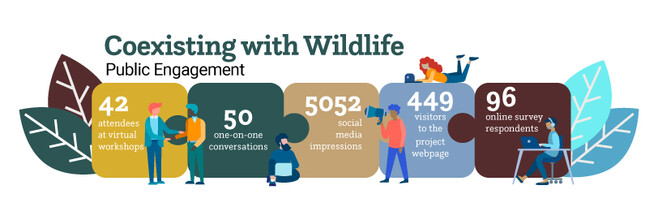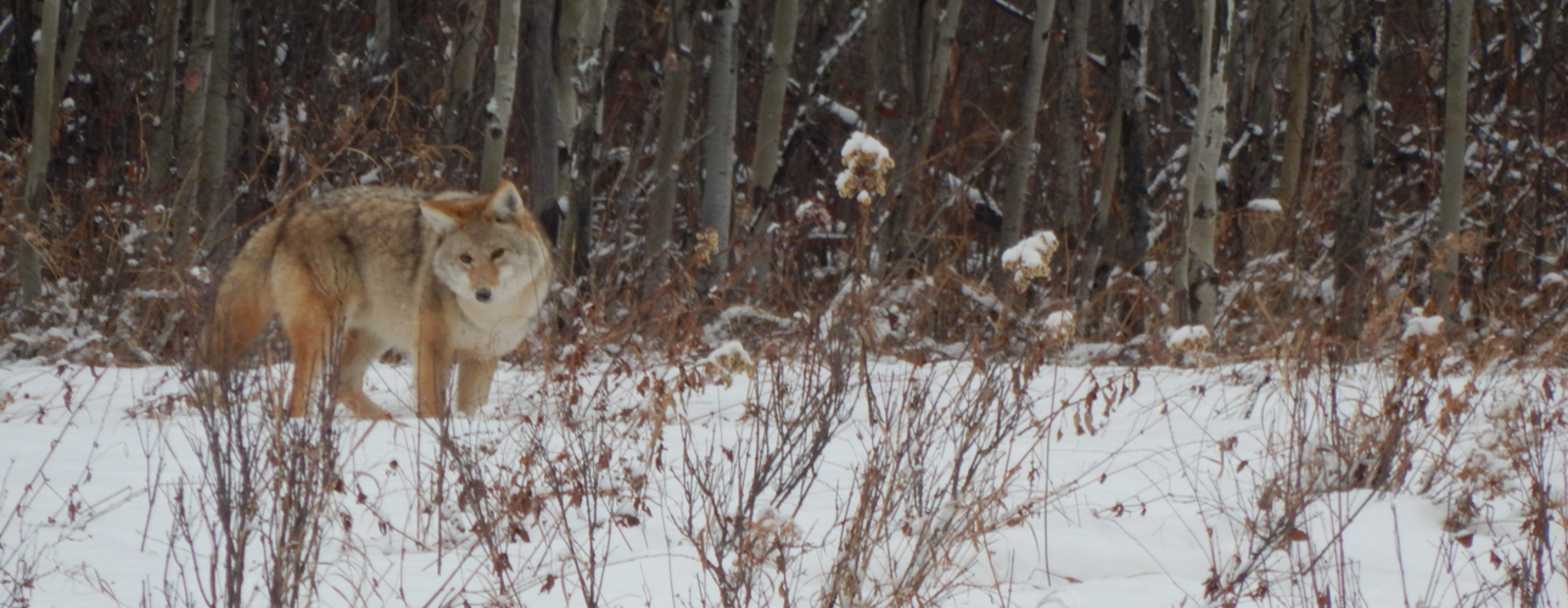Working together so people and wildlife in the Biosphere have the space they need to thrive.
Update: May 2022
Thank you to everyone participated in this conversation. Your input and insight are appreciated. We have learned a lot about the opportunities and challenges relating to coexisting with wildlife in the Beaver Hills Biosphere over the past year and have incorporated your feedback into a draft Human Wildlife Coexistence Strategy.
What we’ve been doing
Over the past year, we have been working to better understand community values, issues and priorities from people who live, work and recreate in the Beaver Hills as they relate to wildlife.
At the end of March 2022, we wrapped up our final phase of community engagement for our Human-Wildlife Coexistence initiative. We heard from participants through a variety of formats, including a collaborative online workshop, survey, emails, one-on-one conversations and social media.
During these conversations, we shared the suggestions and strategies we heard from community members during our initial phase of community engagement (spring 2021) and asked participants for feedback about what we should prioritize over the coming years.
Who we've talked to
Since early 2021, we have been working with key stakeholders, Indigenous rights-holders, special interest groups, landowners, recreational users, agricultural producers, researchers and other community members to understand how we can ensure people and wildlife all have the space they need to thrive in this unique landscape.
 What we heard
What we heard
During our conversations, we asked participants to provide feedback on our proposed definition of human-wildlife coexistence, as well as a draft set of guiding principles for planning and implementation of a Human-Wildlife Coexistence Strategy. We’ve used this feedback to revise and expand these materials.
We also asked participants about how we can best encourage human-wildlife coexistence in the Beaver Hills Biosphere, and what we should consider as we plan this work. People shared their perspectives on a series of coexistence strategies. We heard that many of these strategies are interconnected and inform each other.
Three of the seven coexistence strategies were viewed by participants as critical for the Biosphere to pursue and underpinning all aspects of a Human-Wildlife Coexistence Strategy. These include:
- Regional Collaboration – coordinated and collaborative approaches to management and decision-making
- Indigenous Knowledge – collaboration with Indigenous Nations and communities to help inform collaborative approaches
- Local Education – enhancing rural residential landowner knowledge about wildlife and practices to reduce negative conflicts
We also heard about design features and wildlife management tactics that could reduce the potential for conflict or negative interactions between people and wildlife before they happen. These were specific to the following strategic directions:
- Livestock Depredation – particularly wolves, black bears and cougars in the Blackfoot Grazing Reserve
- Livestock Husbandry Practices – linked to reduction of attractants, installation of barriers (fencing) to reduce damages and modified grazing practices to reduce potential conflict
- Ungulate Property Damage – focused on damage to livestock fencing, forage supplies and ornamental trees
- Road Safety Measures – focused on reducing traffic collisions associated with wildlife
What’s next
We're currently finalizing a draft Human-Wildlife Coexistence Strategy for the Beaver Hills that respects the needs of people and wildlife. This strategy will then be incorporated into the Biosphere's broader conservation plan.
Stay connected
Keep checking this page for more/updated information about the project. We also encourage you to subscribe to our e-newsletter and follow us on Facebook, Instagram and Twitter for more project news and updates.
Have questions?
If you have any questions about this initiative, or would like to learn more about the draft Human-Wildlife Coexistence Strategy, please email info@beaverhills.ca.
Project Lead
Beaver Hills Biosphere Reserve Association
Partners
Elk Island National Park Dialogue Partners
